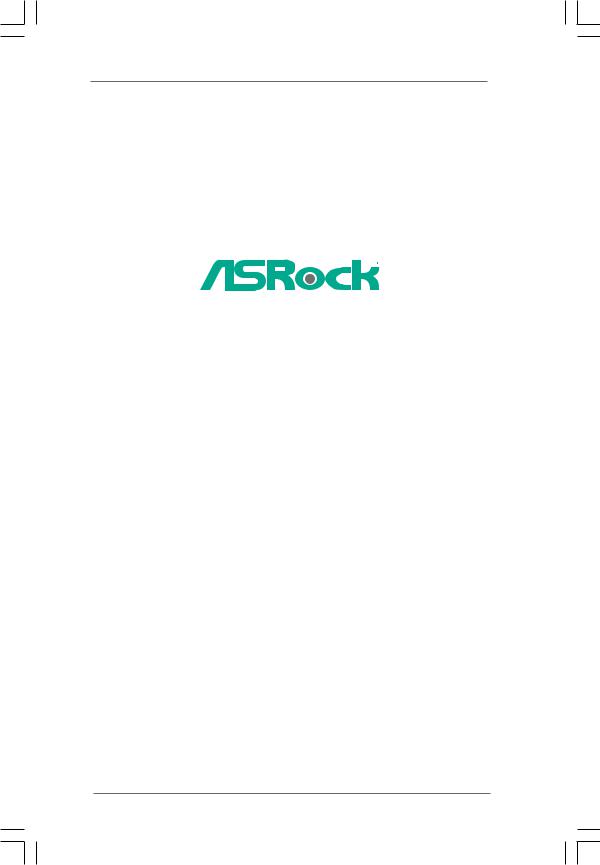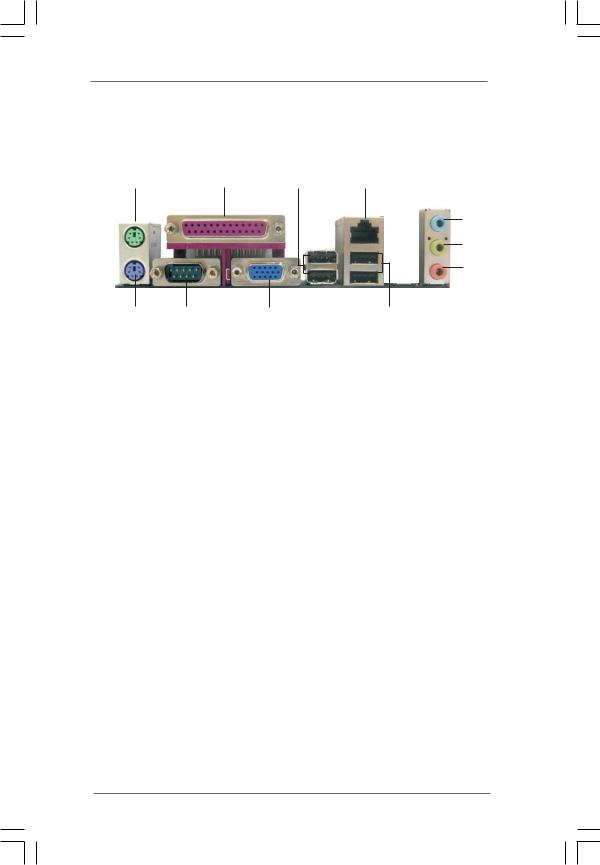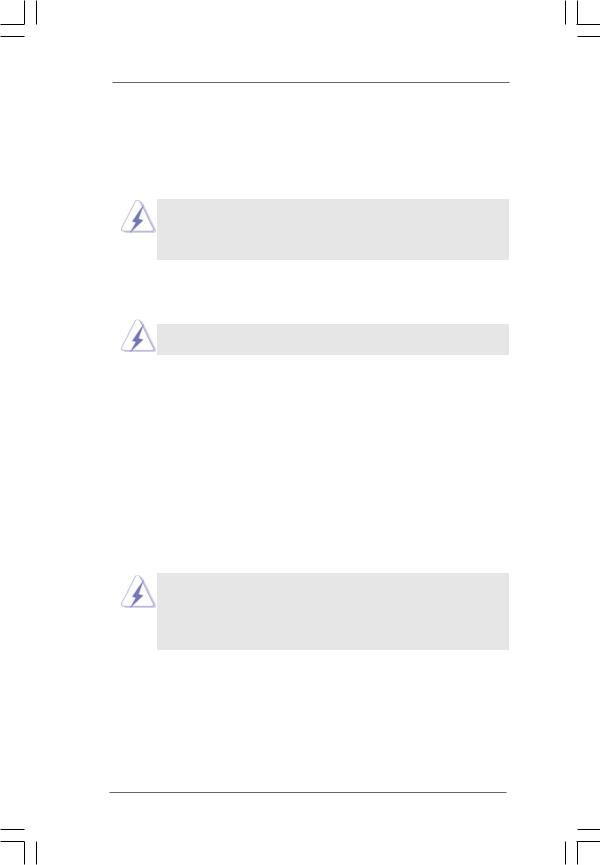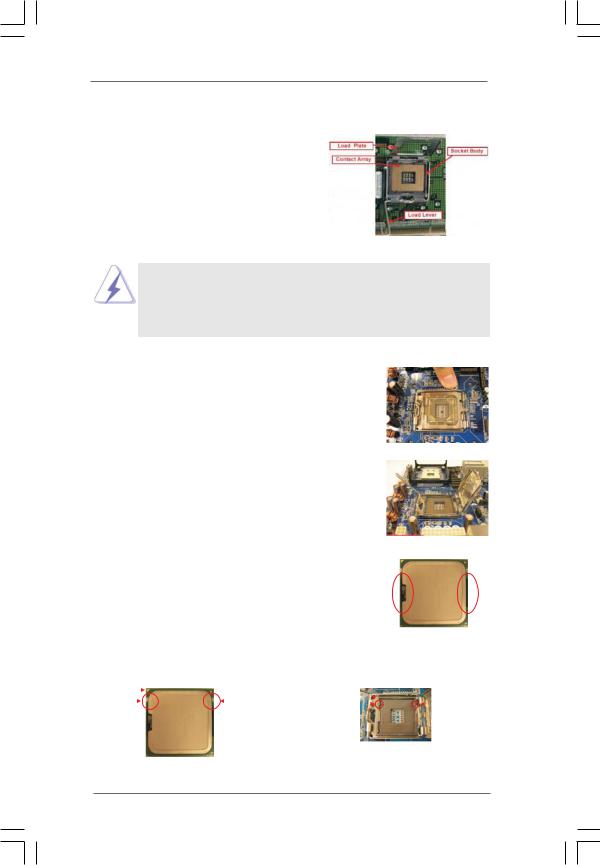ASRock 1333-D667, Wolfdale User Manual

Wolfdale1333-D667
User Manual
Version 2.3 Published May 2008
Copyright©2008 ASRock INC. All rights reserved.
1

Copyright Notice:
No part of this manual may be reproduced, transcribed, transmitted, or translated in any language, in any form or by any means, except duplication of documentation by the purchaser for backup purpose, without written consent of ASRock Inc.
Products and corporate names appearing in this manual may or may not be registered trademarks or copyrights of their respective companies, and are used only for identification or explanation and to the owners’ benefit, without intent to infringe.
Disclaimer:
Specifications and information contained in this manual are furnished for informational use only and subject to change without notice, and should not be constructed as a commitment by ASRock. ASRock assumes no responsibility for any errors or omissions that may appear in this manual.
With respect to the contents of this manual, ASRock does not provide warranty of any kind, either expressed or implied, including but not limited to the implied warranties or conditions of merchantability or fitness for a particular purpose.
In no event shall ASRock, its directors, officers, employees, or agents be liable for any indirect, special, incidental, or consequential damages (including damages for loss of profits, loss of business, loss of data, interruption of business and the like), even if ASRock has been advised of the possibility of such damages arising from any defect or error in the manual or product.
This device complies with Part 15 of the FCC Rules. Operation is subject to the following two conditions:
(1)this device may not cause harmful interference, and
(2)this device must accept any interference received, including interference that may cause undesired operation.
CALIFORNIA, USA ONLY
The Lithium battery adopted on this motherboard contains Perchlorate, a toxic substance controlled in Perchlorate Best Management Practices (BMP) regulations passed by the California Legislature. When you discard the Lithium battery in California, USA, please follow the related regulations in advance.
“Perchlorate Material-special handling may apply, see www.dtsc.ca.gov/hazardouswaste/perchlorate”
ASRock Website: http://www.asrock.com
2

|
|
Contents |
1 Introduction ................................................... |
5 |
|
1.1 |
Package Contents .......................................................... |
5 |
1.2 |
Specifications ................................................................. |
6 |
1.3Minimum Hardware Requirement Table for Windows®
|
VistaTM Premium 2007 and Basic Logo ........................ |
9 |
1.4 |
Motherboard Layout ........................................................ |
10 |
1.5 |
ASRock 6CH I/O ............................................................. |
11 |
2 Installation ..................................................... |
12 |
|
2.1 |
Screw Holes ................................................................... |
12 |
2.2 |
Pre-installation Precautions ............................................ |
12 |
2.3 |
CPU Installation .............................................................. |
13 |
2.4 |
Installation of Heatsink and CPU fan ............................... |
15 |
2.5 |
Installation of Memory Modules (DIMM) ......................... |
16 |
2.6 |
Expansion Slots (PCI and PCI Express Slots) ..................... |
17 |
2.7 |
Jumpers Setup ............................................................... |
18 |
2.8 |
Onboard Headers and Connectors .................................. |
19 |
2.9 |
SATAII Hard Disk Setup Guide ........................................ |
23 |
2.10 Serial ATA (SATA) / Serial ATAII (SATAII) Hard Disks |
|
|
|
Installation ...................................................................... |
24 |
2.11 Driver Installation Guide .............................................. |
24 |
|
2.12 Untied Overclocking Technology .................................... |
24 |
|
3 BIOS SETUP UTILITY.......................................... |
25 |
|
3.1 |
Introduction ..................................................................... |
25 |
|
3.1.1 BIOS Menu Bar ..................................................... |
25 |
|
3.1.2 Navigation Keys .................................................... |
26 |
3.2 |
Main Screen ................................................................... |
26 |
3.3 |
Advanced Screen ............................................................ |
26 |
|
3.3.1 CPU Configuration ................................................ |
27 |
|
3.3.2 Chipset Configuration ............................................ |
29 |
|
3.3.3 ACPI Configuration ................................................ |
32 |
|
3.3.4 IDE Configuration .................................................. |
33 |
|
3.3.5 PCIPnP Configuration ........................................... |
35 |
|
3.3.6 Floppy Configuration ............................................. |
36 |
|
3.3.7 Super IO Configuration .......................................... |
36 |
|
3.3.8 USB Configuration ................................................ |
37 |
3.4 |
Hardware Health Event Monitoring Screen ...................... |
38 |
3.5 |
Boot Screen ................................................................... |
39 |
|
3.5.1 Boot Settings Configuration ................................... |
39 |
3

3.6 |
Security Screen .............................................................. |
40 |
3.7 |
Exit Screen .................................................................... |
41 |
4 Software Support .......................................... |
42 |
|
4.1 |
Install Operating System ................................................ |
42 |
4.2 |
Support CD Information ................................................... |
42 |
|
4.2.1 Running Support CD ............................................. |
42 |
|
4.2.2 Drivers Menu ......................................................... |
42 |
|
4.2.3 Utilities Menu ........................................................ |
42 |
|
4.2.4 Contact Information ............................................... |
42 |
4

Chapter 1 Introduction
Thank you for purchasing ASRock Wolfdale1333-D667 motherboard, a reliable motherboard produced under ASRock’s consistently stringent quality control. It delivers excellent performance with robust design conforming to ASRock’s commitment to quality and endurance.
In this manual, chapter 1 and 2 contain introduction of the motherboard and step-by- step guide to the hardware installation. Chapter 3 and 4 contain the configuration guide to BIOS setup and information of the Support CD.
Because the motherboard specifications and the BIOS software might be updated, the content of this manual will be subject to change without notice. In case any modifications of this manual occur, the updated version will be available on ASRock website without further notice. You may find the latest VGA cards and CPU support lists on ASRock website as well. ASRock website http://www.asrock.com
If you require technical support related to this motherboard, please visit our website for specific information about the model you are using. www.asrock.com/support/index.asp
1.1 Package Contents
ASRock Wolfdale1333-D667 Motherboard
(Micro ATX Form Factor: 9.6-in x 8.7-in, 24.4 cm x 22.1 cm) ASRock Wolfdale1333-D667 Quick Installation Guide
ASRock Wolfdale1333-D667 Support CD
One 80-conductor Ultra ATA 66/100 IDE Ribbon Cable One Ribbon Cable for a 3.5-in Floppy Drive
One Serial ATA (SATA) Data Cable (Optional)
One Serial ATA (SATA) HDD Power Cable (Optional) One ASRock 6CH I/O Shield
5

1.2Specifications
Platform |
- Micro ATX Form Factor: 9.6-in x 8.7-in, 24.4 cm x 22.1 cm |
CPU |
- LGA 775 for Intel® Dual Core CoreTM 2 Extreme / CoreTM 2 Duo |
|
/ Pentium® Dual Core / Celeron®, supporting Dual Core Wolfdale |
|
processors |
|
- Compatible with all FSB1333/1066/800/533MHz CPUs |
|
except Quad Core (see CAUTION 1) |
|
- Supports Hyper-Threading Technology (see CAUTION 2) |
|
- Supports Untied Overclocking Technology (see CAUTION 3) |
|
- Supports EM64T CPU |
Chipset |
- Northbridge: Intel® 945GC A2 |
|
- Southbridge: Intel® ICH7 |
Memory |
- Dual Channel DDR2 Memory Technology (see CAUTION 4) |
|
- 2 x DDR2 DIMM slots |
|
- Support DDR2 667/533 (see CAUTION 5) |
|
- Max. capacity: 4GB (see CAUTION 6) |
Hybrid Booster |
- CPU Frequency Stepless Control (see CAUTION 7) |
|
- ASRock U-COP (see CAUTION 8) |
|
- Boot Failure Guard (B.F.G.) |
Expansion Slot |
- 1 x PCI Express x16 slot |
|
- 1 x PCI Express x1 slot |
|
- 2 x PCI slots |
Graphics |
- Intel® Graphics Media Accelerator 950 |
|
- Pixel Shader 2.0, DirectX 9.0 |
|
- Max. shared memory 224MB (see CAUTION 9) |
Audio |
- 5.1 CH Windows® VistaTM Premium Level HDAudio |
|
(Realtek ALC662 Audio Codec) |
LAN |
- Realtek PCIE x1 LAN 8101E/8102E |
|
- Speed: 10/100 Ethernet |
|
- Supports Wake-On-LAN |
Rear Panel I/O |
ASRock 6CH I/O |
|
- 1 x PS/2 Mouse Port |
|
- 1 x PS/2 Keyboard Port |
|
- 1 x Serial Port: COM1 |
|
- 1 x VGA Port |
|
- 1 x Parallel Port (ECP/EPP Support) |
|
- 4 x Ready-to-Use USB 2.0 Ports |
|
- 1 x RJ-45 LAN Port |
|
- HD Audio Jack: Line in / Front Speaker / Microphone |
6

|
Connector |
- 4 x SATAII 3.0 Gb/s connectors (No Support for RAID and “Hot |
|
|
Plug” functions) (see CAUTION 10) |
|
|
- 1 x ATA100 IDE connector (supports 2 x IDE devices) |
|
|
- 1 x Floppy connector |
|
|
- 1 x DeskExpress Hot Plug Detection header |
|
|
- CPU/Chassis FAN connector |
|
|
- 24 pin ATX power connector |
|
|
- 4 pin 12V power connector |
|
|
- CD in header |
|
|
- Front panel audio connector |
|
|
- 2 x USB 2.0 headers (support 3 USB 2.0 ports) |
|
|
(see CAUTION 11) |
|
|
- 1 x WiFi header (see CAUTION 12) |
|
BIOS Feature |
- 4Mb AMI BIOS |
|
|
- AMI Legal BIOS |
|
|
- Supports “Plug and Play” |
|
|
- ACPI 1.1 Compliance Wake Up Events |
|
|
- Supports jumperfree |
|
|
- AMBIOS 2.3.1 Support |
|
Support CD |
- Drivers, Utilities, AntiVirus Software (Trial Version) |
|
Hardware |
- CPU Temperature Sensing |
|
Monitor |
- Chassis Temperature Sensing |
|
|
- CPU Fan Tachometer |
|
|
- Chassis Fan Tachometer |
|
|
- CPU Quiet Fan |
|
|
- Voltage Monitoring: +12V, +5V, +3.3V, Vcore |
|
OS |
- Microsoft® Windows® 2000 / XP / XP 64-bit / VistaTM / |
|
|
VistaTM 64-bit compliant |
|
Certifications |
- FCC, CE, WHQL |
WARNING
Please realize that there is a certain risk involved with overclocking, including adjusting the setting in the BIOS, applying Untied Overclocking Technology, or using the thirdparty overclocking tools. Overclocking may affect your system stability, or even cause damage to the components and devices of your system. It should be done at your own risk and expense. We are not responsible for possible damage caused by overclocking.
7

CAUTION!
1. |
FSB1333-CPU will operate in overclocking mode. Under this situation, |
|||
|
PCIE frequency will also be overclocked to 115MHz. |
|||
2. |
About the setting of “Hyper Threading Technology”, please check page |
|||
|
28. |
|
|
|
3. |
This motherboard supports Untied Overclocking Technology. Please read |
|||
|
“Untied Overclocking Technology” on page 24 for details. |
|||
4. |
This motherboard supports Dual Channel Memory Technology. Before you |
|||
|
implement Dual Channel Memory Technology, make sure to read the |
|||
|
installation guide of memory modules on page 16 for proper installation. |
|||
5. |
Please check the table below for the CPU FSB frequency and its corre- |
|||
|
sponding memory support frequency. |
|||
|
|
CPU FSB Frequency |
Memory Support Frequency |
|
|
|
1333 |
DDR2 533*, DDR2 667 |
|
|
|
1066 |
DDR2 533, DDR2 667 |
|
|
|
800 |
DDR2 400, DDR2 533, DDR2 667 |
|
|
|
533 |
DDR2 400, DDR2 533 |
|
|
* When you use a FSB1333-CPU on this motherboard, it will run at |
|||
|
|
DDR2 500 if you adopt a DDR2 533 memory module. |
||
6. |
Due to the chipset limitation, the actual memory size may be less than |
|||
|
4GB for the reservation for system usage under Windows® XP, Windows® |
|||
|
XP 64-bit, Windows® VistaTM and Windows® VistaTM 64-bit. |
|||
7. |
Although this motherboard offers stepless control, it is not recom- |
|||
|
mended to perform over-clocking. Frequencies other than the recom- |
|||
|
mended CPU bus frequencies may cause the instability of the system |
|||
|
or damage the CPU. |
|
|
|
8. |
While CPU overheat is detected, the system will automatically shutdown. |
|||
|
Before you resume the system, please check if the CPU fan on the |
|||
|
motherboard functions properly and unplug the power cord, then plug it |
|||
|
back again. To improve heat dissipation, remember to spray thermal |
|||
|
grease between the CPU and the heatsink when you install the PC |
|||
|
system. |
|
|
|
9. |
The maximum shared memory size is defined by the chipset vendor |
|||
|
and is subject to change. Please check Intel® website for the latest |
|||
|
information. |
|
|
|
10. |
Before installing SATAII hard disk to SATAII connector, please read the “SATAII |
|||
|
Hard Disk Setup Guide” on page 23 to adjust your SATAII hard disk drive to |
|||
|
SATAII mode. You can also connect SATA hard disk to SATAII connector |
|||
|
directly. |
|
|
|
11. |
Power Management for USB 2.0 works fine under Microsoft® Windows® |
|||
|
VistaTM 64-bit / VistaTM / XP 64-bit / XP SP1 or SP2 / 2000 SP4. |
|||
8

12.WiFi header supports WiFi+AP function with ASRock WiFi-802.11g / WiFi-802.11n module, an easy-to-use wireless local area network (WLAN) adapter. It allows you to create a wireless environment and enjoy the convenience of wireless network connectivity. Please visit our website for the availability of ASRock WiFi-802.11g / WiFi-802.11n
module.
ASRock website http://www.asrock.com
1.3Minimum Hardware Requirement Table for Windows®
VistaTM Premium 2007 and Basic Logo
For system integrators and users who purchase this motherboard and plan to submit Windows® VistaTM Premium 2007 and Basic logo, please follow below table for minimum hardware requirements.
CPU |
Celeron D 326 |
Memory |
512MB x 2 Dual Channel (Premium) |
|
512MB Single Channel (Basic) |
|
256MB x 2 Dual Channel (Basic) |
VGA |
DX9.0 with WDDM Driver |
*If you plan to use onboard VGA to submit Windows® VistaTM logo, please keep the default setting of “DVMT Mode Select” option under BIOS.
*If you plan to use external graphics card on this motherboard, please refer to Premium Discrete requirement at http://www.asrock.com
*After June 1, 2007, all Windows® VistaTM systems are required to meet above minimum hardware requirements in order to qualify for Windows® VistaTM Premium 2007 logo.
9

1.4 Motherboard Layout |
|
|
|
|
|
|
|
|
|
|
|
||||||
|
|
|
1 |
2 |
3 |
4 |
|
5 |
6 |
|
|
|
|
7 |
|
|
|
|
|
|
|
|
|
22.1cm (8.7 in) |
|
|
|
|
|
|
|
|
|
||
Keyboard PS2 |
Mouse |
PS2 |
1 |
|
|
|
|
|
|
|
|
|
|
|
|
|
|
|
|
|
PS2_USB_PWR1 |
|
|
|
|
|
CoreDualCPU |
Wolfdale |
FSB1333 |
DDRII667 |
|
|
|
|
|
USB 2.0 |
|
|
|
|
|
|
|
pin-240bit, |
pin-240bit, |
|
|
||||||
COM1 |
PARALLEL PORT |
|
|
ATX12V1 |
|
|
|
|
|
|
|
|
|
|
|
|
|
VGA1 |
|
|
|
|
|
|
|
|
|
|
|
|
FSB800 |
FSB800 |
|
|
|
|
|
|
|
|
|
|
|
|
|
|
|
|
|
module) |
module) |
|
|
T: USB2 |
|
|
|
|
|
|
|
|
Wolfdale1333-D667 |
|
|
DDRII 1(64 |
DDRII 2(64 |
4cm.24 (9.6in) |
|
||
B: USB3 |
|
|
|
|
|
|
|
|
|
ChannelDual |
|
||||||
MicIn Bottom: |
LineOut Center: |
LineIn |
Top: |
|
|
|
|
|
|
|
|
8 |
|||||
USB 2.0 |
Top: |
|
|
CPU_FAN1 |
|
|
|
|
|
|
|
|
|
|
|
||
T: USB0 |
RJ-45 |
|
|
|
|
|
|
|
|
|
|
|
|
|
|
||
B: USB1 |
|
|
Super |
|
|
Intel |
|
|
|
|
|
|
|
|
|
||
|
|
|
|
IO |
|
1 |
|
|
|
|
|
|
|
|
|
|
|
|
|
|
|
|
|
IR1 |
|
|
|
|
|
|
|
|
|
|
|
|
|
|
|
|
|
|
945GC A2 |
|
|
|
|
|
|
|
|
||
28 |
|
|
|
ATXPWR1 |
Chipset |
|
|
|
|
|
|
|
|
||||
|
|
|
|
|
|
|
|
|
|
|
|
|
|
||||
|
|
|
|
|
|
|
|
|
|
|
|
|
|
|
|||
|
|
|
|
|
|
PCIE1 |
|
|
|
|
|
|
|
|
IDE1 |
|
|
|
|
|
|
|
|
|
|
|
|
|
|
|
|
|
|
|
|
27 |
|
|
|
|
|
PCI |
|
|
|
|
|
|
|
CMOS |
|
|
|
|
|
|
|
|
|
|
|
|
|
|
|
Battery |
|
|
|||
|
LAN |
|
|
|
EXPRESS |
|
|
|
|
|
|
|
|
CLRCMOS1 |
|
9 |
|
|
PHY |
|
PCIE2 |
|
|
|
|
|
|
|
|
|
|
|
|
||
|
|
|
|
|
|
|
|
Intel |
|
|
|
|
|
|
|||
26 |
|
|
|
|
|
|
|
|
|
|
|
|
|
|
10 |
||
|
|
|
|
|
|
|
|
ICH7 |
|
|
|
|
|
|
|
||
|
|
CD1 |
|
|
PCI1 |
|
|
|
|
|
|
|
|
11 |
|||
25 |
|
|
|
|
|
|
|
|
|
|
|
|
|
|
|
||
|
|
|
|
|
RoHS |
|
|
|
|
|
|
4Mb |
SATAII_3 |
|
12 |
||
24 |
|
|
|
|
|
|
|
|
|
|
|
BIOS |
|
|
|||
1 |
|
|
|
|
|
|
|
|
|
|
|
|
|
SATAII_4 |
|
||
23 |
HD_AUDIO1 |
|
|
|
SATAII |
|
|
|
|
|
|
|
13 |
||||
|
|
|
|
|
PCI2 |
|
|
|
|
SATAII_1 |
|
|
|||||
|
|
|
|
|
|
USB6 |
|
|
|
|
|
|
|
|
|||
|
|
AUDIO |
|
|
|
1 |
USB4_5 |
CHA_FAN1 |
|
|
|
|
SATAII_2 |
PANEL 1 |
|
|
|
|
|
CODEC |
|
|
|
|
|
|
|
|
|
PLED PWRBTN |
|
|
|||
|
|
|
|
1 |
|
|
1 |
|
|
SPEAKER1 |
|
|
|
1 |
|
|
|
|
|
|
|
WIFI |
|
FLOPPY1 |
|
|
|
|
|
|
|
|
HDLED RESET |
|
|
|
|
|
|
|
|
|
|
|
|
|
|
|
|
|
|
|
|
|
|
|
|
22 |
|
21 |
20 |
19 |
18 |
17 |
16 |
15 |
14 |
|
|
||
1 |
PS2_USB_PWR1 Jumper |
15 |
Secondary SATAII Connector |
||
2 |
ATX 12V Connector (ATX12V1) |
|
(SATAII_2; Red) |
|
|
3 |
DeskExpress Hot Plug Detection Header |
16 |
BIOS SPI Chip |
|
|
|
(IR1) |
17 |
Chassis Speaker Header (SPEAKER 1) |
||
4 |
CPU Fan Connector (CPU_FAN1) |
18 |
Chassis Fan Connector (CHA_FAN1) |
||
5 |
775-Pin CPU Socket |
19 |
USB 2.0 |
Header |
(USB4_5, Blue) |
6 |
North Bridge Controller |
20 |
USB 2.0 |
Header |
(USB6, Blue) |
7 |
2 x 240-pin DDR2 DIMM Slots |
21 |
Floppy Connector (FLOPPY1) |
||
|
(Dual Channel: DDRII_1, DDRII_2; Yellow) |
22 |
WiFi Header (WIFI) |
||
8 |
IDE1 Connector (IDE1, Blue) |
23 |
PCI Slots (PCI1- 2) |
||
9 |
Clear CMOS Jumper (CLRCMOS1) |
24 |
Front Panel Audio Header (HD_AUDIO1) |
||
10 |
South Bridge Controller |
25 |
AInternal |
Audio |
Connector: CD1 (Black) |
11 |
Primary SATAII Connector (SATAII_1; Red) |
26 |
PCI Express x1 Slot (PCIE2) |
||
12 |
Third SATAII Connector (SATAII_3; Orange) |
27 |
PCI Express x16 Slot (PCIE1) |
||
13 |
Fourth SATAII Connector (SATAII_4; Orange) |
28 |
ATX Power Connector (ATXPWR1) |
||
14 |
System Panel Header (PANEL1) |
|
|
|
|
10

1.5 ASRock 6CH I/O
1 |
2 |
3 |
4 |
5
6
7
|
11 |
10 |
9 |
|
8 |
|
1 |
PS/2 |
Mouse Port |
(Green) |
7 |
Microphone (Pink) |
|
2 |
Parallel Port |
|
8 |
USB 2.0 Ports |
(USB01) |
|
3 |
USB 2.0 Ports (USB23) |
9 |
VGA Port |
|
||
4 |
RJ-45 Port |
|
10 |
COM Port |
|
|
5 |
Line |
In (Light Blue) |
11 |
PS/2 Keyboard |
Port (Purple) |
|
6Line Out (Lime)
*To enable Multi-Streaming function, you need to connect a front panel audio cable to the front panel audio header. Please refer to below steps for the software setting of Multi-Streaming.
For Windows® XP:
After restarting your computer, you will find “Mixer” tool on your system. Please select “Mixer ToolBox”  , click “Enable playback multi-streaming”, and click “ok”. Choose “2CH” or
, click “Enable playback multi-streaming”, and click “ok”. Choose “2CH” or
“4CH” and then you are allowed to select “Realtek HDA Primary output” to use Rear Speaker and Front Speaker, or select “Realtek HDA Audio 2nd output” to use front panel audio. Then reboot your system.
For Windows® VistaTM:
After restarting your computer, please double-click “Realtek HD Audio Manager” on the system tray. Set “Speaker Configuration” to “Quadraphonic” or “Stereo”. Click “Device advanced settings”, choose “Make front and rear output devices playbacks two different audio streams simultaneously”, and click “ok”. Then reboot your system.
11

Chapter 2 Installation
Wolfdale1333-D667 is a Micro ATX form factor (9.6" x 8.7", 24.4 x 22.1 cm) motherboard. Before you install the motherboard, study the configuration of your chassis to ensure that the motherboard fits into it.
Make sure to unplug the power cord before installing or removing the motherboard. Failure to do so may cause physical injuries to you and damages to motherboard components.
2.1 Screw Holes
Place screws into the holes indicated by circles to secure the motherboard to the chassis.
Do not over-tighten the screws! Doing so may damage the motherboard.
2.2 Pre-installation Precautions
Take note of the following precautions before you install motherboard components or change any motherboard settings.
1.Unplug the power cord from the wall socket before touching any component.
2.To avoid damaging the motherboard components due to static electricity, NEVER place your motherboard directly on the carpet or the like. Also remember to use a grounded wrist strap or touch a safety grounded object before you handle components.
3.Hold components by the edges and do not touch the ICs.
4.Whenever you uninstall any component, place it on a grounded antistatic pad or in the bag that comes with the component.
Before you install or remove any component, ensure that the power is switched off or the power cord is detached from the power supply.
Failure to do so may cause severe damage to the motherboard, peripherals, and/or components.
12

2.3 CPU Installation
For the installation of Intel 775-LAND CPU, please follow the steps below.
775-Pin Socket Overview
Before you insert the 775-LAND CPU into the socket, please check if the CPU surface is unclean or if there is any bent pin on the socket. Do not force to insert the CPU into the socket if above situation is found. Otherwise, the CPU will be seriously damaged.
Step 1. Open the socket:
Step 1-1. Disengaging the lever by depressing down and out on the hook to clear retention tab.
Step 1-2. Rotate the load lever to fully open position at approximately 135 degrees.
Step 1-3. Rotate the load plate to fully open position at approximately 100 degrees.
Step 2. Insert the 775-LAND CPU:
Step 2-1. Hold the CPU by the edges where are marked with black lines.
Step 2-2. Orient the CPU with IHS (Integrated Heat Sink) up. Locate Pin1 and the two orientation key notches.
lineblack |
lineblack |
Pin1 |
|
|
|
|
|
Pin1 |
|
|
|
|
alignment key |
||
|
|
|
|
|
|
|
|
|
|||||
|
|
|
|
|
|
|
|
|
|
|
|||
|
|
|
|
|
|
|
alignment key |
|
|
|
|
|
|
orientation |
orientation |
|
|
|
|
|
|||||||
|
|
|
|
|
|||||||||
|
|
|
|
|
|
|
|||||||
key notch |
key notch |
|
|
|
|
|
|
|
|||||
|
|
|
|
|
|
|
|
|
775-Pin Socket |
||||
|
|
|
|
775-LAND CPU |
|
|
|
|
|
|
|
||
13
